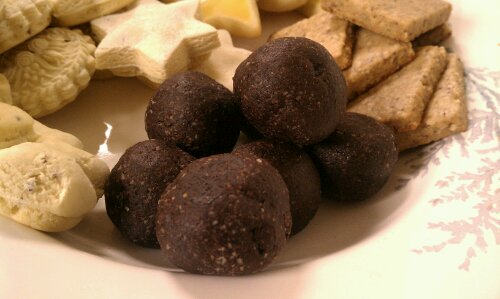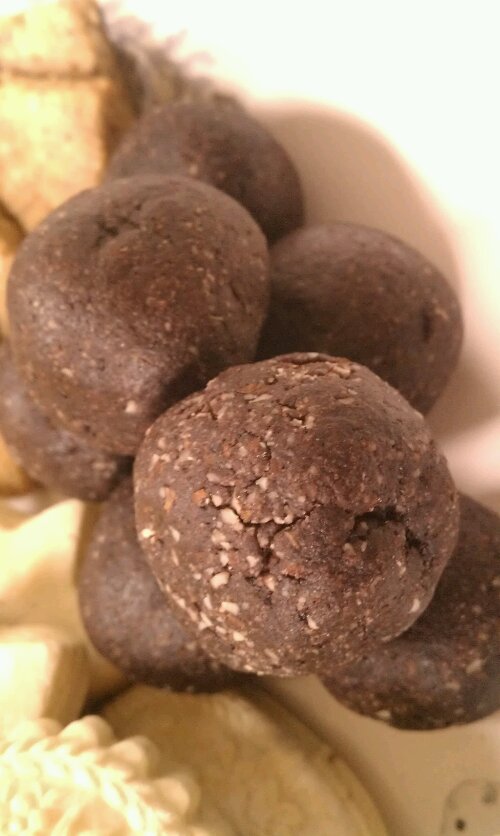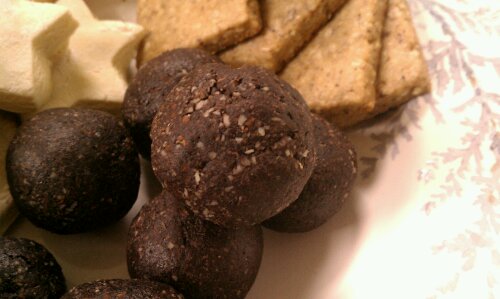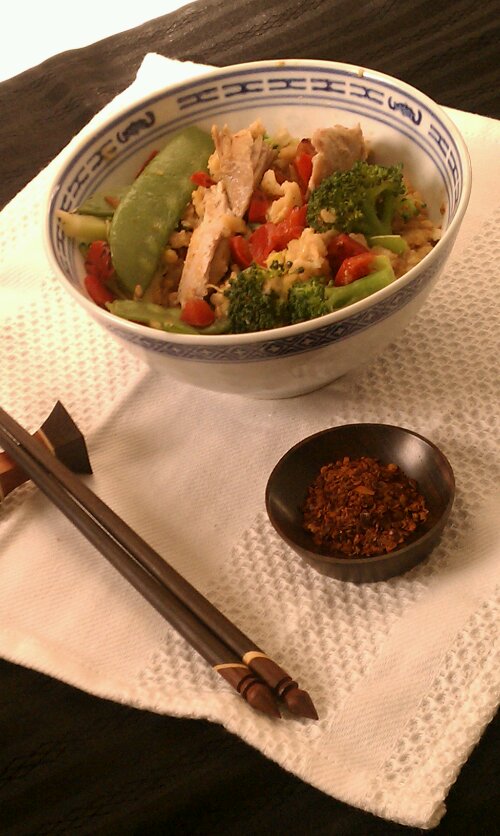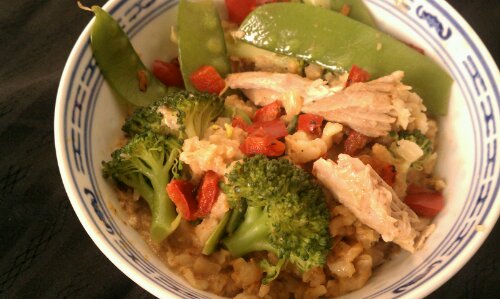 Chicken Turkey Meatball Muffins
Chicken Turkey Meatball Muffins
I came to thinking about this the other day. Can you name a snack that would deliver protein versus carbs, just one thought, on top of your head, …nothing? Right, thought so. Short of protein bars (mostly containing sugar=CARBS and soy), there really isn’t much we ‘snack’ on that would fall into this category. So when I came across a recipe for a turkey meatloaf a light went on, and I tinkered around in the kitchen until I came up with this variation.
I’ve made two versions so far, one with chicken breast meat and venison, (all ground) the other with turkey thigh meat and chicken thigh meat with the addition of vegetable.
 Chicken Venison Meatball Muffins, (I think I added some jalapeno, see the green?)
Chicken Venison Meatball Muffins, (I think I added some jalapeno, see the green?)
I notice using breast meat and venison makes the muffins denser, the second version is a bit softer and juicier due to either using only thigh meat, or the additional vegetables. For vegetables I used the pulp from my juicer. I like having fresh squeezed vegetable juice in my diet, since the micro nutrient content of fresh homemade vegetable juice is out of this world, but having no compost, feel bad throwing out the dry pulp that is left over. Well, I stuck it in these and let me tell ya, it tastes awesome! If you don’t have a juicer, I am sure you could just shred and/or blend some vegetables, if juicy, squeeze in some paper towels and reduce the egg whites a bit or add some additional oats. Have not tried that, but don’t see why it wouldn’t work.
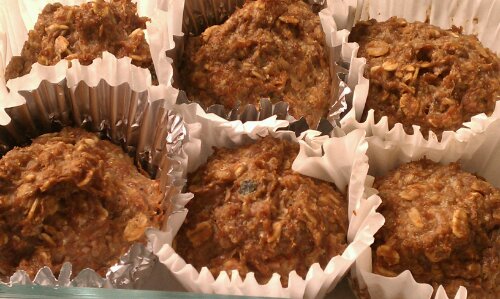
Meatballs to go, now who wouldn’t love that??
Eat them cold or microwave for 20-30 seconds to warm up. You could also put them on a salad as a protein addition, if you like.
Chicken Venison Meatball Snackie
Ingredients
- 1 lb lean ground chicken thigh meat
- 1 lb ground turkey thigh meat
- 1 cup rolled oats
- 1/2 cup quinoa flakes (optional)
- 1 cup liquid egg whites (about 5-6)
- 2 tsp paprika, sweet
- 1 tsp salt
- 1 tsp white pepper
- 1 tsp chipotle* pepper, ground (optional, makes it spicy, yum!)
- 1/2 tsp ground cumin
- 1/2 tsp dried thyme
* if you don’t have chipotle pepper, use cayenne
Chicken Turkey Vegetable Meatball Muffins
Ingredients
- 1 lb lean ground chicken meat (I used breast meat)
- 1 lb ground venison (which is always lean, you know, no junk food or CAFO’s in nature)
- 1 cup mixed vegetable pulp (I used a mix of celery,kale, kohlrabi, carrot and golden beet)
- 1 cup rolled oats
- 1 cup liquid egg whites (about 5-6)
- 2 tsp paprika, sweet
- 1 tsp salt
- 1 tsp white pepper
- 1 tsp chipotle pepper, ground (optional, makes it spicy, yum!)
- 1/2 tsp ground cumin
- 1/2 tsp dried thyme
Directions
- Preheat oven to 375°F
- Place meat, egg whites (if using, vegetable pulp and quinoa as well) and oats together in a large bowl.
- Mix the spices and salt in a small dish, add to the large bowl and mix into the meat using a fork until well incorporated.
- Line a muffin pan with (jumbo) muffin cups or grease well
- Form into 12 balls, about baseball sized and place in muffin pan
- Bake 30-35 minutes or until cooked through.
- Cook in muffin pan for 5 minutes, then place on cooling rack
- Keep in the fridge or freeze for later use
Each chicken venison muffin has 20 g protein, 3 g fat, and 5 g carbs, 123 calories
Each chicken turkey muffin has 18.3 g protein, 5.3 g fat, and 8.3 g carbs (includes fiber from the vegetable pulp) 156 cal (with Quinoa 18.8 g protein)

Copyright © 2012 Simple Healthy Homemade. All rights reserved









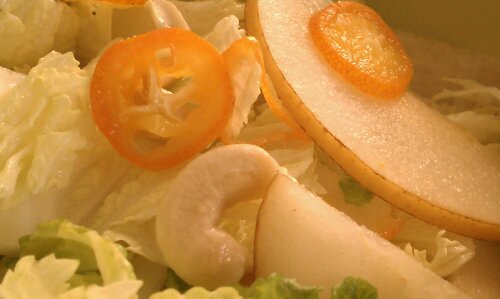


 Cerliac
Cerliac


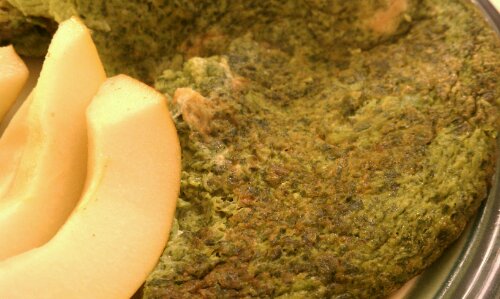
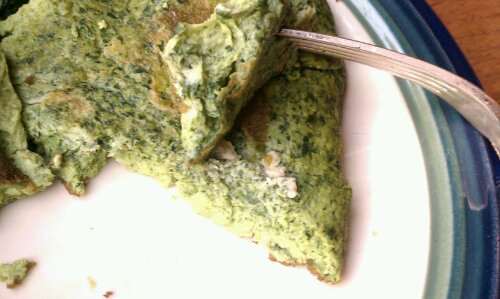




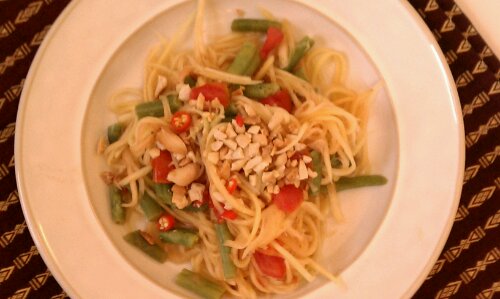





 I forgot to add lime until I sat down to eat…
I forgot to add lime until I sat down to eat…


